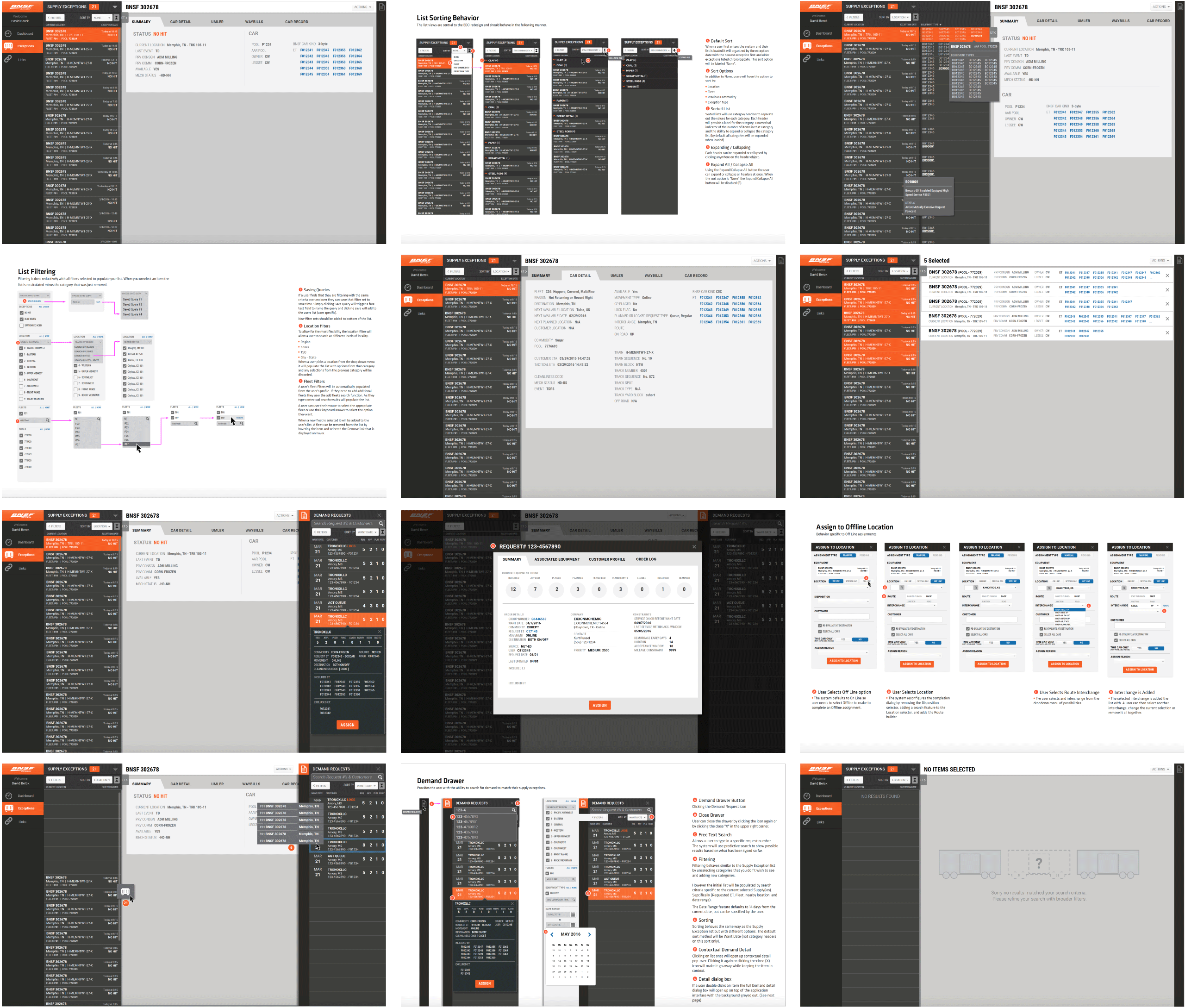ROLE: Lead User Experience Designer
SUMMARY:
BNSF’s Equipment Distribution Optimizer (EDO) was developed in 1991 to help automate the use of it’s rail cars. Using an algorithm to make assignments they accounted for 90% of all assignments. However there are always exceptions that needed to be assigned on a case by case basis. BNSF brought our team in to refine the user experience of researching these “excpetions” and the process of manually assigning cars.
GOALS:
- Improve the user experience of researching exceptions and making assignments.
- Streamline the process for assigning exception cars.
- Improve common workflows to reduce mental load.
- Consolidate pop-up based work flows into a unified app.
- Increase efficiency of tasks and visibility of actions.
DISCOVERY:
Be fore we could make improvements we had to understand the current state of the system. We created of visual inventory of the current system which relied on a main panel that spawned various pop-up dialog boxes depending on the actions you take. This caused the user’s screen to fill up with pop-ups on top of pop-ups.
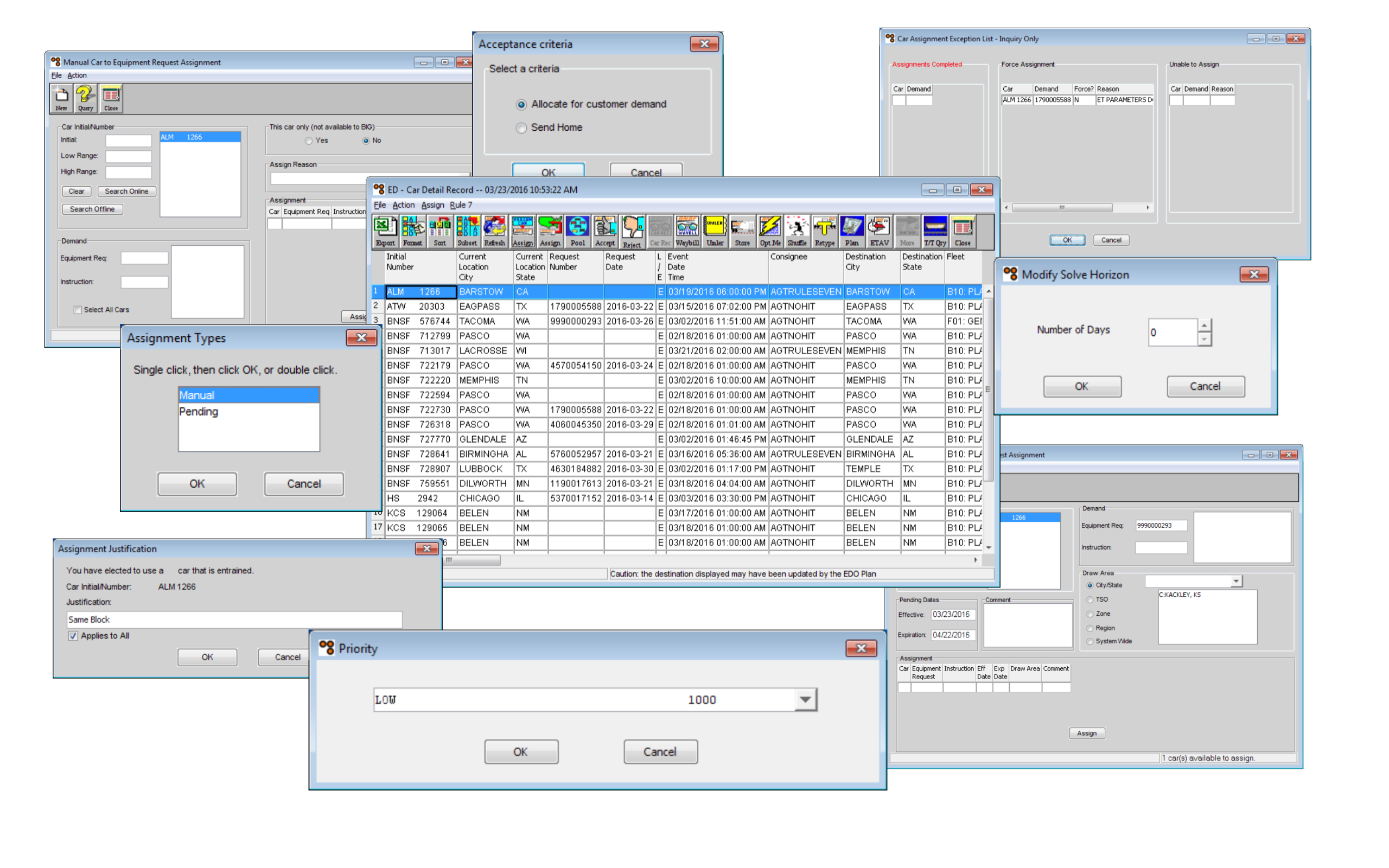
Every piece of functionality woudl open up in a separate pop-up window creating an overwhelming sea of windows.
To understand just how these pop-ups were being used we shadowed users, on site, as they performed their day to day tasks involving this system. Using that information we created a journey map to help identify pain points and recognize areas where we could provide new value.
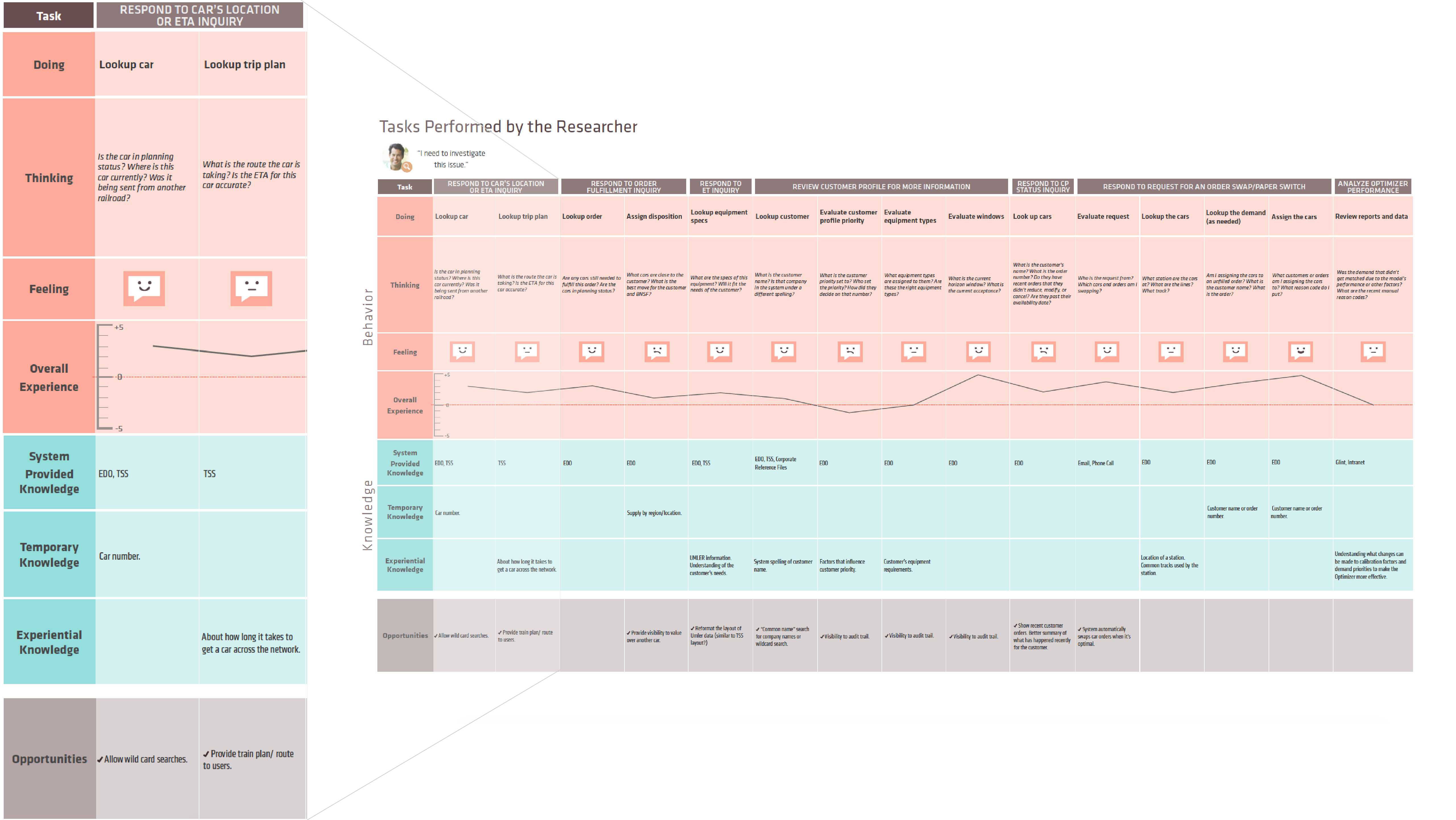
Journey Maps help us plot out the steps a user takes and the thought process they go through to complete a task.
CONCEPTING
We knew we needed to consolidate all of these pop-ups into one unified app. So we started by simplifying the workflow to it’s most basic: Finding Exceptions, Researching them, and Resolving them.
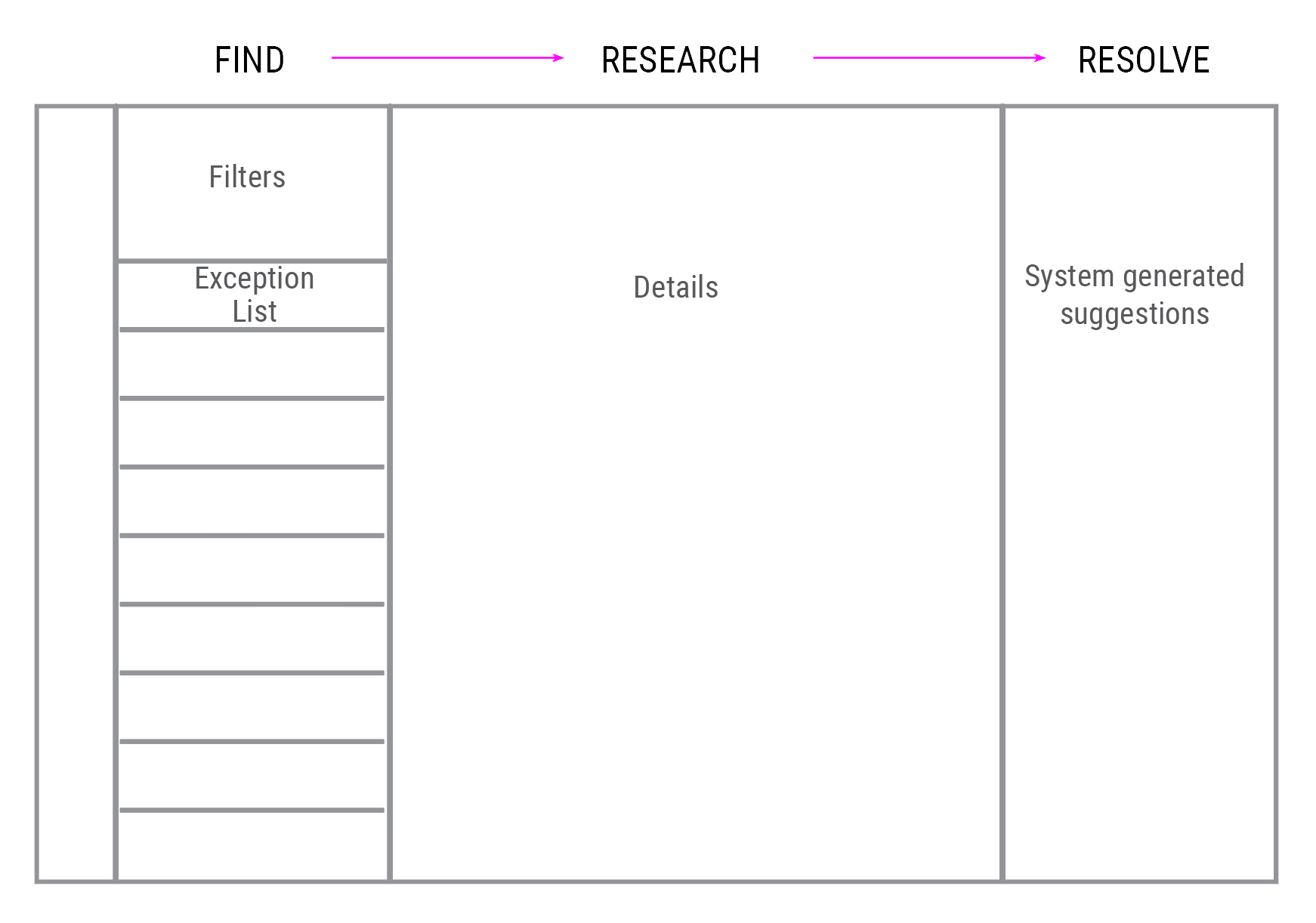
Wireframes
We had identified several key stories from talking to users of how the system needs to be used. So we started with most important actions and iterated on the different work flows while regularly checking in with actual users to ensure that their needs were being met with these new behaviors.
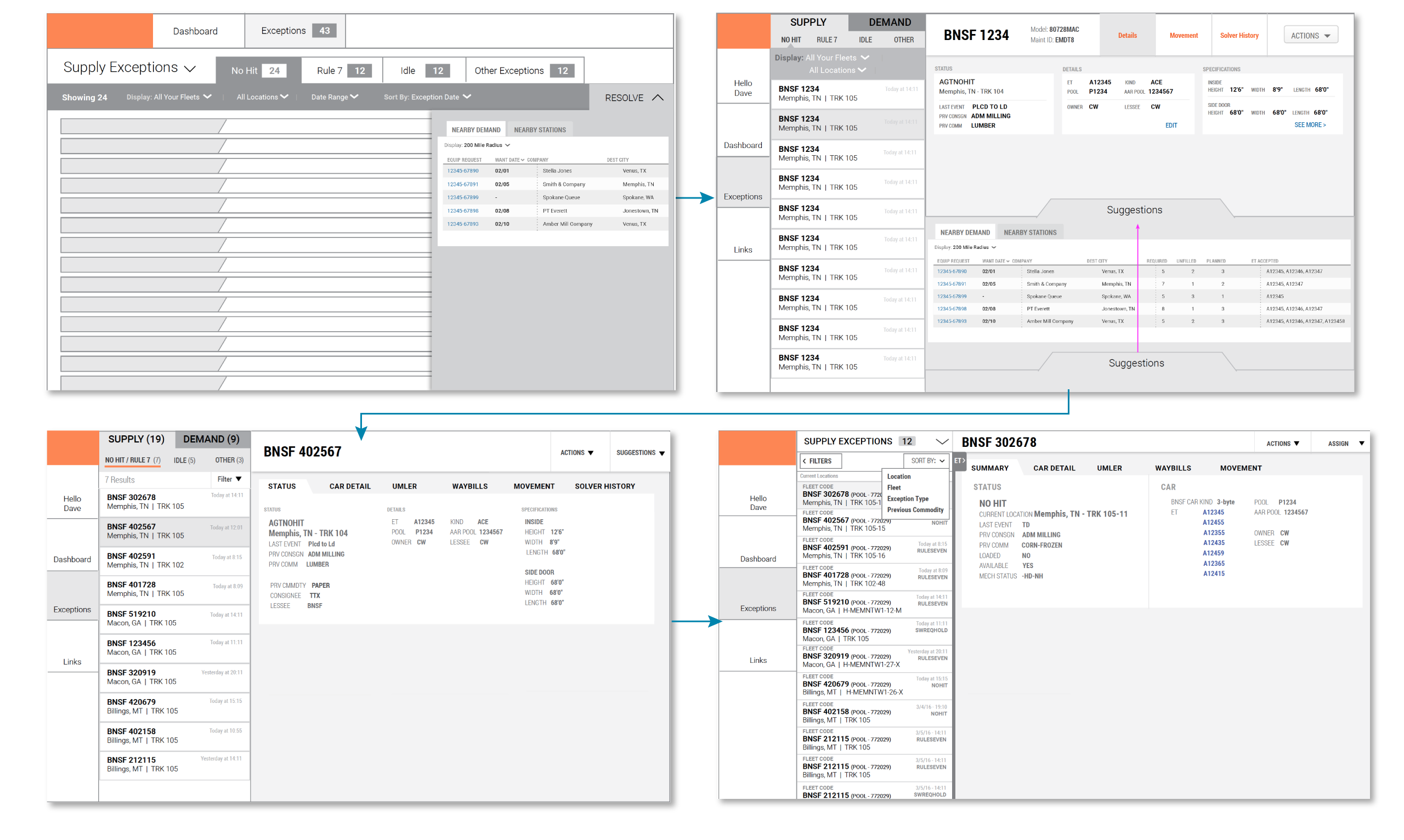
User Testing
Once we felt we had a solid concept that addressed most of the user needs we wanted to validate those assumptions. We set-up some usability tests with users that had not been consulted on the project up to this point to see if they could navigate the wire framed system.
We selected several key tasks that we wanted users to complete and mocked up clickable prototypes in InVision:
These tests were very enlightening as several of our previous assumptions were blown away and we were able to identify areas of confusion that needed to be addressed.
Visual Design
After we gained buy in from users on the work flows we started to apply visual design to the tool keeping in mind BNSF’s brand colors, fonts, and other assets.
